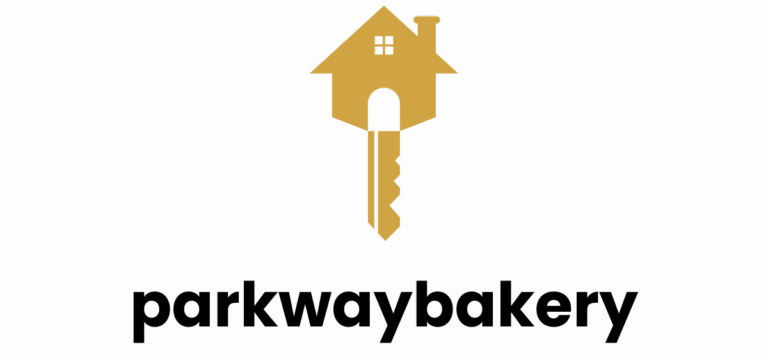Navigating the world of mortgage loans can feel like trying to find a needle in a haystack—while blindfolded. But fear not! With the right steps, securing that dream home mortgage can be as smooth as butter on a warm biscuit. From understanding credit scores to choosing the right lender, each step is crucial in turning that “for sale” sign into a “sold” sign.
Table of Contents
ToggleUnderstanding Mortgage Loans
A mortgage loan represents a financial agreement between a borrower and a lender. This agreement allows the borrower to purchase a home while promising to repay the loan amount over time. Various types of mortgage loans exist, including fixed-rate mortgages, adjustable-rate mortgages, and interest-only mortgages. Each type offers different advantages and risks.
Fixed-rate mortgages maintain the same interest rate for the entire loan term, providing predictable monthly payments. Conversely, adjustable-rate mortgages feature interest rates that may fluctuate after an initial fixed period, potentially leading to changes in monthly payments over time. Interest-only mortgages permit borrowers to pay only the interest for a specific period, with principal payments starting later.
Lenders evaluate several factors to determine mortgage eligibility. Credit scores play a crucial role, indicating the borrower’s creditworthiness. Income level, employment history, and existing debts also influence loan approval decisions. Generally, a higher credit score opens up access to better loan terms and lower interest rates.
Potential borrowers must comprehend the concept of down payments. This is the initial sum paid upfront and typically ranges from 3% to 20% of the property’s purchase price. A larger down payment often reduces monthly payments and eliminates the need for private mortgage insurance (PMI).
Understanding mortgage rates is vital for borrowers. These rates can be influenced by various factors, including market trends and economic conditions. Researching the current rates helps borrowers secure the best terms possible.
Choosing a lender requires careful evaluation. Options include banks, credit unions, and online mortgage lenders. Each type offers different loan products, terms, and customer service, making it essential to compare multiple lenders before making a decision.
Pre-Qualification Process

The pre-qualification process is a critical first step in obtaining a mortgage loan. This stage involves gathering essential information about finances and preparing necessary documentation.
Gathering Necessary Documents
Start by collecting documents that lenders typically require. These items include recent pay stubs, tax returns from the past two years, and bank statements for the last few months. Documentation of assets like savings or retirement accounts might also be necessary. Each piece of information provides lenders with a clearer picture of the financial situation. Together, these documents help streamline the loan process and demonstrate creditworthiness.
Assessing Your Financial Health
Assessing financial health involves reviewing credit scores, debt-to-income ratios, and overall financial stability. Individuals should check their credit reports for accuracy, as errors can impact loan eligibility. A higher credit score often leads to better loan terms, influencing interest rates. After determining debt-to-income ratios, borrowers should aim for a maximum of 43%. Understanding personal finances helps potential borrowers make informed decisions throughout the mortgage process.
Loan Application Process
The loan application process includes several key steps that facilitate obtaining a mortgage. Following a structured approach streamlines the journey to home ownership.
Choosing the Right Lender
Selecting the right lender is crucial for mortgage success. Evaluate options such as banks, credit unions, and online lenders. Each lender offers various products and terms, influencing overall costs. Compare interest rates, fees, and customer service experiences. A lender with favorable ratings and reliable support enhances the borrowing experience significantly. Borrowers should assess their preferences, such as responsiveness and flexibility, to ensure a good match. Prioritize lenders that don’t just meet financial qualifications but also align with personal needs and goals.
Completing the Application
Completing the mortgage application requires thorough preparation. Gather necessary documents such as pay stubs, tax returns, and bank statements. Each item helps lenders evaluate financial status and determine eligibility. Accuracy is critical; any discrepancies could lead to delays or rejection. Provide personal information, including employment history and current debts, to give a comprehensive financial picture. Review all entries for correctness before submission. Presenting a complete application speeds up the process, making it easier to secure desired terms.
Loan Processing and Underwriting
Loan processing and underwriting play crucial roles in securing a mortgage loan. Understanding what occurs during this stage helps borrowers navigate the complexities involved.
What to Expect During Underwriting
Underwriting involves verifying the borrower’s financial details and assessing risk. Lenders review submitted documents, such as income statements and credit reports, to determine eligibility. A thorough analysis takes place to confirm that the borrower meets the loan requirements. Decisions may include approving the loan, requesting additional information, or denying the application based on risk assessments. Borrowers encounter communication from the lender throughout this process, receiving updates on any necessary steps. Generally, this phase can last several days to weeks, depending on the complexity of the application.
Common Challenges and Solutions
Challenges arise during underwriting that can delay approval. Insufficient documentation often hinders progress, so providing complete financial records is essential. Lenders may also question discrepancies in income or credit reports; thus, addressing these concerns proactively aids in smooth processing. Changes in financial status or employment during this period can lead to complications. Maintaining stability ensures fewer obstacles. Engaging in open communication with the lender assists borrowers in navigating challenges effectively. Understanding common issues empowers borrowers to prepare more thoroughly and enhances the likelihood of successful loan approval.
Closing the Loan
Closing a loan represents the final phase in the mortgage process, where the borrower completes the necessary steps to finalize home ownership. Understanding the components involved at this stage is crucial.
Understanding Closing Costs
Closing costs encompass the fees associated with finalizing a mortgage loan. Typically, these costs range from 2% to 5% of the loan amount. Borrowers should anticipate expenses such as title insurance, appraisal fees, and attorney fees. Additionally, various prepaid costs may include property taxes and homeowner’s insurance premiums. Reviewing the Good Faith Estimate (GFE) helps borrowers prepare for these costs, ensuring transparency and avoiding surprises on closing day.
Finalizing the Paperwork
Finalizing paperwork involves several essential documents. The Closing Disclosure outlines the final terms of the loan, detailing the interest rate and monthly payments. Borrowers must review this document carefully for accuracy. Another key document is the promissory note, which acts as a legal commitment to repay the loan. Various disclosures that explain borrower rights and responsibilities are necessary as well. Signatures on these documents indicate acceptance and commitment to the terms, allowing the transfer of ownership to proceed smoothly.
Navigating the mortgage loan process requires careful planning and attention to detail. By understanding credit scores and choosing the right lender borrowers can significantly enhance their chances of securing favorable terms. Each step from pre-qualification to closing plays a vital role in achieving home ownership.
Staying organized and maintaining open communication with lenders can help address challenges that may arise. Ultimately being well-informed and proactive will lead to a smoother experience. With the right approach borrowers can turn their dream of home ownership into reality.







